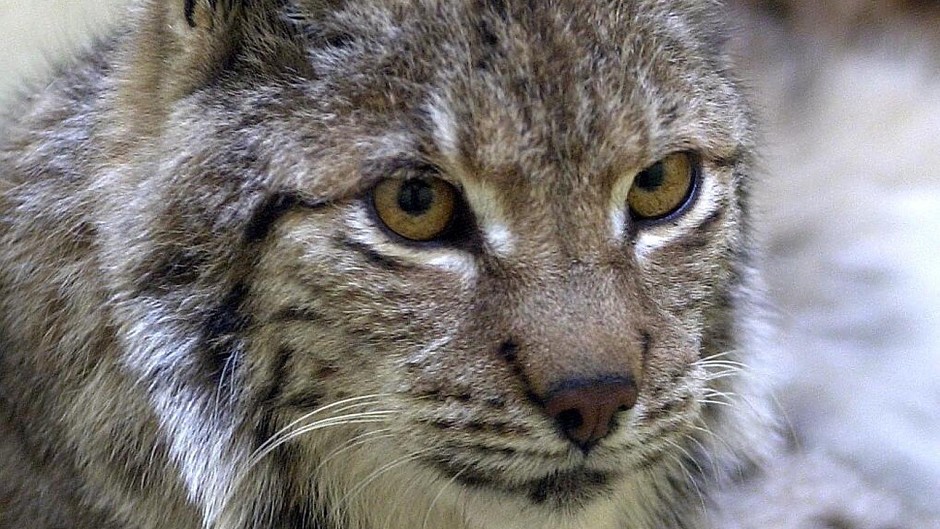Farmers fears their livestock could be under threat from plans to reintroduce a big cat to the wild.
The group fighting to allow Eurasian lynx to roam free for the first time in 1.300 years has the backing of the public.
The Lynx UK Trust revealed yesterday that a survey completed by almost 10,000 people – carried out by the University of Cumbria – showed 91% support for the idea.
The group is also preparing formal applications for trial reintroductions of the species to send to the National Species Reintroduction Forum.
The trust want to bring six of the animals to the Grumack Forest, at Succoth, near Huntly in Aberdeenshire, and three locations in England and Wales.
But farmer, John Morren – who keeps cattle and sheep on his land near the Grumack Forest – said: “I think it would be negative. I think we already have badgers and foxes and they are all predators.”
The 78-year-old added: “I think it would be a bit alarming for the lambs to be picked up and carried and bad for the ewe when she loses a lamb. If a lynx was hungry it would go for the ewe as well.”
Chief scientific adviser to the reintroduction project, Paul O’Donoghue, said lynx presented “very little threat” to livestock.
Mr O’Donoghue said: “We’ve been blown away by the level of interest and support from the public. That led to government approval for the trial reintroduction.
“The UK public have spoken. Lynx have proven themselves across Europe to be absolutely harmless to humans and of very little threat to livestock, whilst bringing huge benefit to rural economies and the natural ecology.”
However, Huntly councillor Joanna Strathdee said: “I am not an expert but how can they be sure they are not going to kill farm livestock? I would question how they can be so sure they are not going to decimate the sheep and lambs.”
Deputy director of policy for the National Farmers Union Scotland, Andrew Bauer claimed the Lynx UK Trust had “neither properly consulted land managers nor credibly explained how it plans to manage the risks” of the reintroduction.
He added: “Lynx are solitary and territorial, with individual ranges of at least 40 square miles. It is difficult to reconcile this with Lynx UK Trust’s proposals for reintroduction of multiple adults into relatively small forested areas.”
The trust will apply for licences for a controlled trial later this year.
What do we know about the Lynx?
Habitat loss and hunting led to the extinction of the Eurasian lynx from the UK in the sixth century.
Europe’s third largest predator, it is dwarfed only by the brown bear and the grey wolf.
Today the species is found from Western Europe right across Russia and central Asia where the stealthy big cats are known to bring down animals more than four times their size.
The creatures live solitary lives in woodland areas and are renowned as clinical and efficient hunters, honing in on prey such as deer before delivering a fatal bite to the neck or snout.
Their huge, fur-covered paws allow for hunting in the deepest snow but the animal is best recognised by the pointed black hairs on the tip of its ears and a shock of hair under the neck.
Eurasian lynx grow to more than 4ft with males weighing as much as 88lbs and females 44lbs.
Under the scheme proposed by the Lynx UK Trust, the animals would be released onto private land and monitored round-the-clock to allow experts to see how they adapt to their new surroundings.
The group said the species could help the regeneration of Scottish forests by hunting deer herds – whose overgrazing in woodland areas has contributed to the decline of trees such as the Scots pine.
The owner of the Grumack Forest, businessman Tony Marmont, offered his land to the reintroduction scheme earlier this year.
The Lynx UK Trust said its latest surveys found the majority of people wanted the animals reintroduced within the next 12 months.
